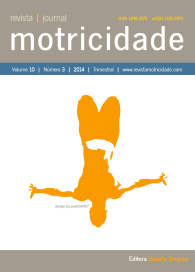Sport commitment in adolescent soccer players
DOI:
https://doi.org/10.6063/motricidade.2969Abstract
The aim of this study was to contribute to the postulates of the self-determination theory, the hierarchical model of intrinsic and extrinsic motivation by Vallerand, and social goals. A structural regression model was estimated to analyze the relations between social goals (responsibility and relationships), praise for autonomous behavior, satisfaction of the basic psychological needs and intrinsic motivation in commitment to sport. A sample of 264 young Spanish soccer players aged between 14 and 16 (M =14.74, SD =.77) participated in the study. Structural Equation Modeling results showed that the social responsibility goal, the social relationship goal and praise for autonomous behavior predicted perceived competence. Furthermore, the relationship goal also predicted the need for relatedness. Satisfaction of the basic psychological needs for competence and relatedness predicted intrinsic motivation. Intrinsic motivation positively predicted future commitment to sport. These results highlighted the importance of social goals, praise for autonomous behavior and psychological mediators in encouraging greater commitment in young soccer players. Future research should focus on the coach’s role in generating greater commitment to sport through the development of intervention methodologies based on social goals.
Downloads
Additional Files
Published
Issue
Section
License
The authors of submitted manuscripts must transfer the full copyright to Journal Motricidade / Sílabas Didáticas Editions. Granting copyright permission allows the publication and dissemination of the article in printed or electronic formats, and copyrights start at the moment the manuscript is accepted for publication. It also allows Journal Motricidade to use and commercialise the article in terms of licensing, lending or selling its content to indexation/abstracts databases and other entities.
According to the terms of the Creative Commons licence, authors may reproduce a reasonable number of copies for personal or professional purposes, but without any economic gain. SHERPA/RoMEO allows authors to post a final digital copy (post-printing version) of the article on their websites or on their institutions' scientific repository.


